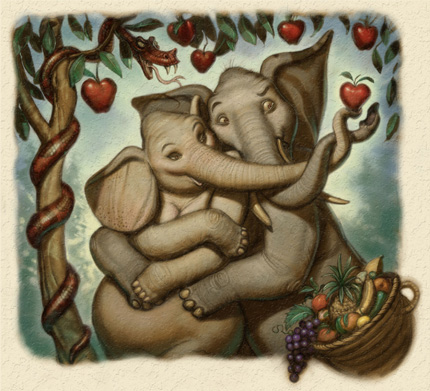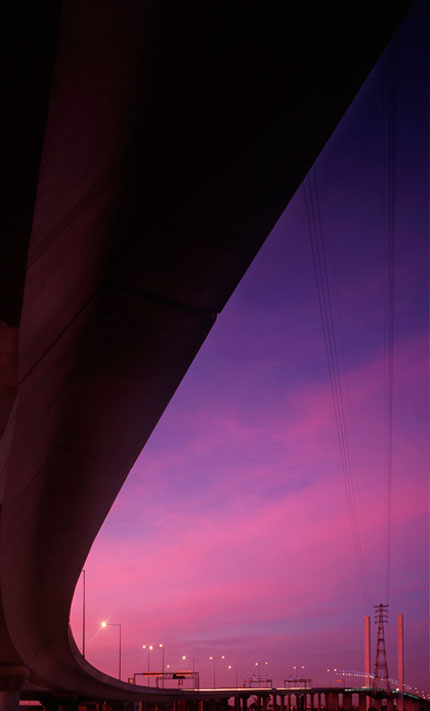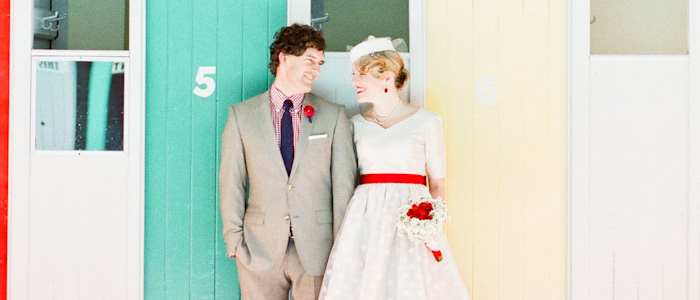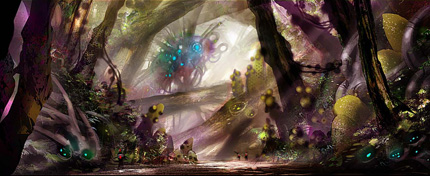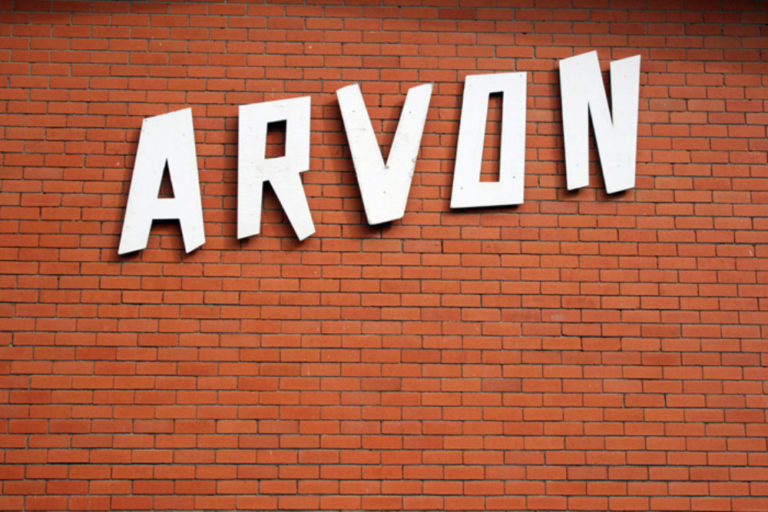Interview with illustrator Andrew Trimmer
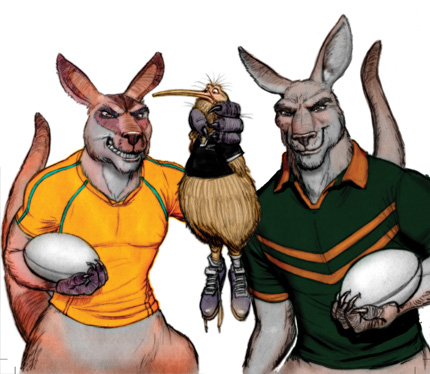
As a commercial illustrator for more than twenty years, Andrew Trimmer’s folio is a treasure trove of all things from 2D animation, film concept design, advertising and publishing. He’s a Brisbane based freelancer that’s adapted with the changing times and technology to keep himself busy.
Andrew’s creative practice started with acrylics, or watercolour dyes and Polychromos coloured pencils over photocopied sketches and watercolour paper or mounted illustration board. However, these days Andrew prefers to take his hand drawn sketches into Photoshop and create his colour work on his Wacom Intuos tablet or on the Wacom Cintiq interactive monitor.
It seems that I’m frequently featuring graduates from the Queensland College of Art, and really, this is not intentional but there just happens to be a lot of super talented creatives from across Australia that have studied there. And yes, Andrew is a graduate of a Bachelor of Arts in 2D Animation from the late 1980’s.
Read on for more of Andrew’s interesting journey as a long-term freelancer, and visit his website for more of his incredible illustrations.
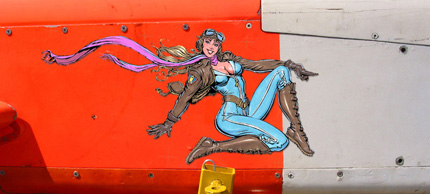
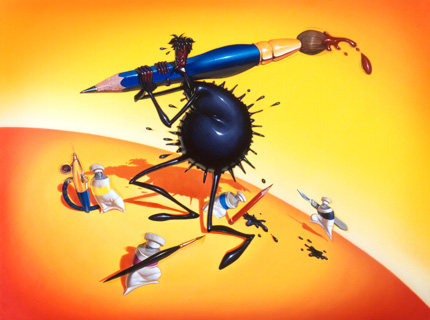
How have you got to where you are today?
After high school I originally wanted to be a cinematographer, but because of my entrance folio for Queensland College of Art, I was accepted into Animation instead, where I finished a 3 year Bachelor of Arts. I’m very glad I did as it gave a well rounded understanding of all aspects of the film making process, and how to build visual storytelling from the ground up with design.
During first year, I did one day a week work experience with Dennis Veal Graphic Design helping with small jobs doing finished art and the odd paste up. He graciously showed me the day to day workings of a design studio and how illustration, typography and photography were used as an integral part of a graphic designer’s visual language. During second and third year, I worked part time for Max Bannah Animation helping with 2D rough inbetweening and cell painting for his TV commercials.
Later, after graduating from QCA I was very fortunate that Max offered me a full time job, so in 1989 I spent a year doing animation, cell painting, and the odd background illustration for commercials, and a short film he made. Unfortunately, due to a combination of drying up work from an impending recession, and a personal health issue, Max had to close the studio for recovery, and I spent the Christmas of 1989 working on my illustration folio. I’d always maintained an interest in illustration, and although I loved doing drawn animation, by the end of ’89 I’d become cagey about its repetitive process, in that one couldn’t just spend time finishing a single piece of ‘art’.
So in 1990 I started a new decade and a new career freelancing to advertising agencies, animation studios, and newspapers providing illustrations, caricatures, and animation concept design. 1993 saw the culmination of the worldwide changes in personal computer graphics programs, the internet, and downsizing everyone and everything to maximise profits. Here was where I was slow on the upkeep…
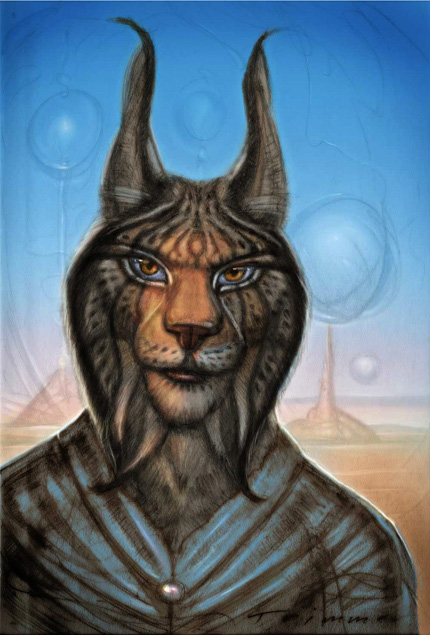
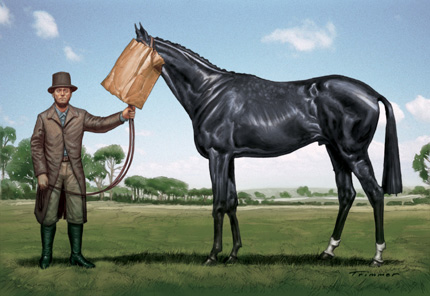
In a few words, describe yourself…
Meticulous, philosophical, loyal, a listener, a slow learner, and stubborn. All contradictory good and bad Taurean qualities apparentl.
What are you spending your time on at the moment?
I’m working on creating personal art pieces in the vein of 1940’s pin up girl ‘Bomber Art’ to be painted onto large aluminium panels as if they’ve been de-installed from imaginary racing air craft.
Do you have a ritual for getting into the creative mindset? Or a creative process?
I always start with reference search, and then draw.
Sketching is the key to everything, as all solutions to creative problems stem from transforming ideas into marks on paper. Thumbnail scribbles allow the hand, eye, and ‘third eye’ to loosen up, line up and work together. There is no escape from the process of creating dynamic illustrations without committing to drawing practice first.
That doesn’t imply that I find it easy, it’s difficult and stressful performing to someone else’s expectations, let alone my own.
I heard Sting say in an interview once that he actually hates writing songs as the process of extracting nothing into something is mentally and emotionally painful.
However, a lot of artists say they don’t necessarily love the process, but they enjoy having done the process.
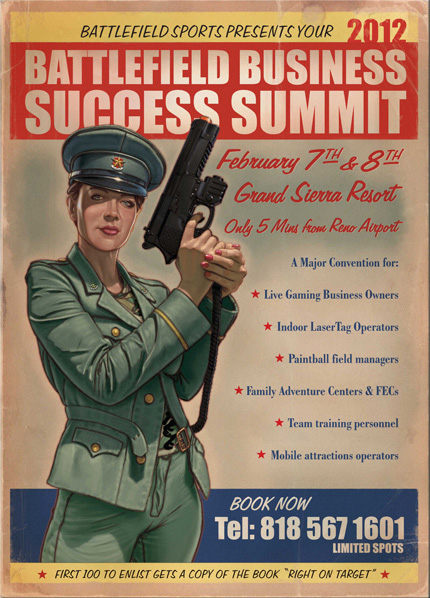
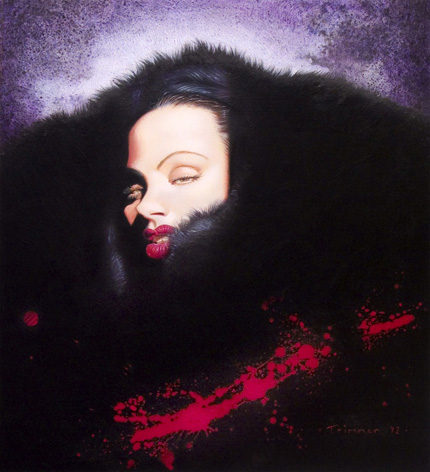
What or who inspires you?
Firstly, being at the beach relaxes me no end; it takes away all mental anxieties about life and the ‘stuff’ associated to work. I go on walking meditations photographing forms of nature by being ‘led’ to see the hidden design in nature; no stress, no importance of outcome, and relevance of time fades away.
Secondly, for practical artistic inspiration, there are lots of stupendously talented individuals in various fields across the ages. The old school masters like Giovanni Bernini, Michelangelo Caravaggio, and Paul Gustave Dore, works from the French Orientalist period and the gob-smacking paintings of Ludwig Deutsch, any of the 19th century Pre Raphaelite Brotherhood like John William Waterhouse; all true illustrators in every sense of the title depicting events in literature and history.
For 20th Century masters, I can’t go past our own Norman Lindsay, Tom Roberts, and Arthur Streeton of the Heidelberg School, and a huge host of world illustrators, comic and concept artists like N.C. Wyeth, Norman Rockwell, Gil Elvgren, Frank Frazetta, Ralph McQuarrie, Syd Mead, Chris Foss, Drew Struzan, Michael Whelan, James Gurney, Bernie Wrightson, Jean Gerard (Mobius), Alex Ross, Brian Froud, Alan Lee, Sebastian Kruger, Hajime Sorayama, Michael Turner, and John Berkey.
I’m sorry ladies, but I seemed to have missed female artistic influences along the way.
As for 21st Century talent, well this list is just open ended. Japanese anime movies and serials have been a pleasant distraction since the childhood days of Gigantor, Marine Boy, and G-Force.
The movies of Hayayo Miyazaki always transport me back to a childlike sense of wonder. Pixar, ILM, and Weta Workshop always amaze me at the leaps and bounds they make in the evolution of fantasy realism.
The concept design scene in movies and games is the domain of a huge bunch of outlandishly talented and prolific people that constantly astounds me nowadays. Sites like Concept Art, Deviant Art, and Gnomon Workshop feature all the leading lights in the industry.
This is the one field derived from the modern entertainment industry that the mainstream fine art gallery scene seems to have decisively chosen to ignore for the suspected reason there is such a profound wealth of unheralded talent that, dare I say, leaves the so-called ‘fine art’ scene a lot to be desired, in terms of sheer technical and conceptual ability.
It remains an ignored, untapped, underground source of under-appreciated ability in the mainstream. But it’s good that this parallel art form that feeds into the system is appreciated and promoted by the people who create it and consume it.
What are you most proud of?
I guess after putting all the work together for my web site a couple of years ago, which I view as a finished book that’s put on the shelf after 20 years in creative industries, and seeing the volume of stuff that I’ve actually done, I fondly refer to the 2 year stint designing for the animation series ‘Animalia’ between 2006 and 2008 as being the best overall job I’ve ever had. This was an awesome culmination of all the skills I’ve learnt over the years, and for the great people I worked with.
When you were a child, what did you want to be when you grew up?
I wanted to build space ship models for Industrial Light and Magic after obsessing over the special effects in Star Wars Ep 4!

